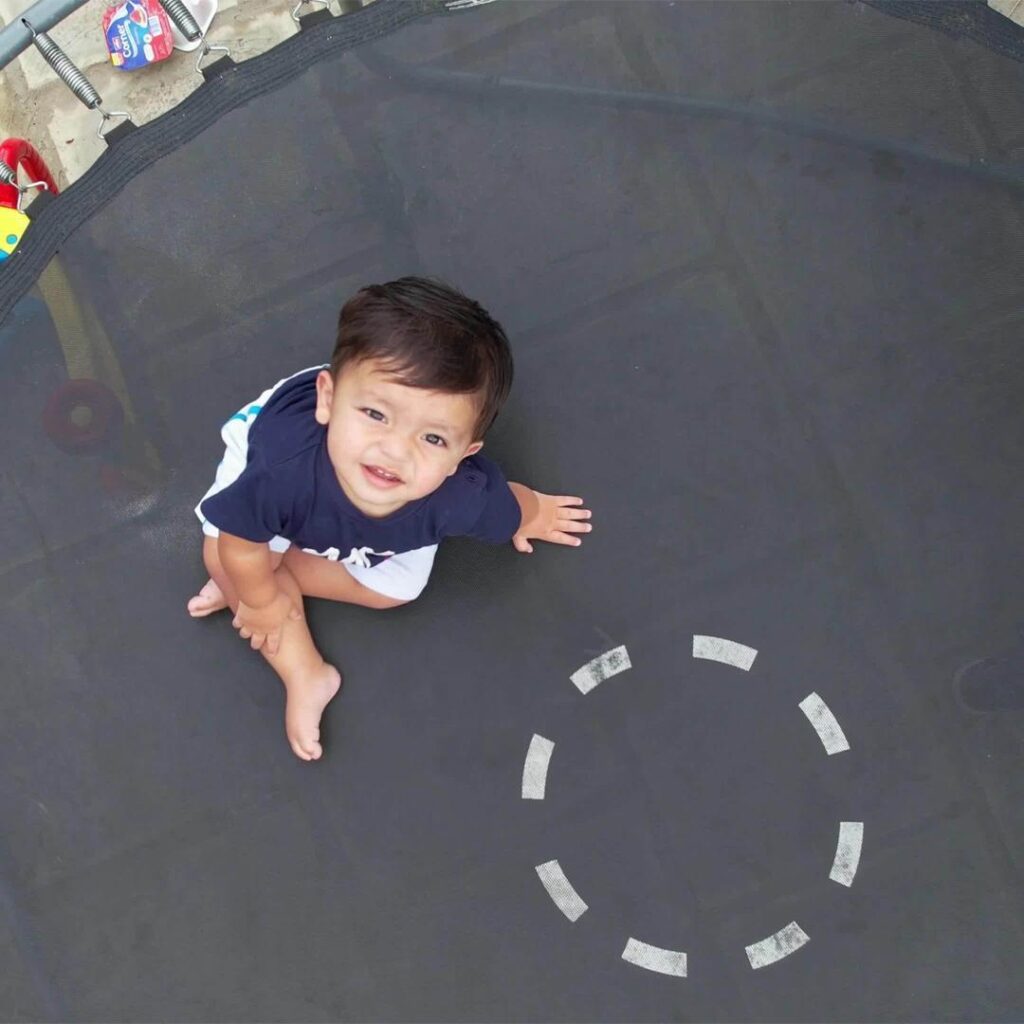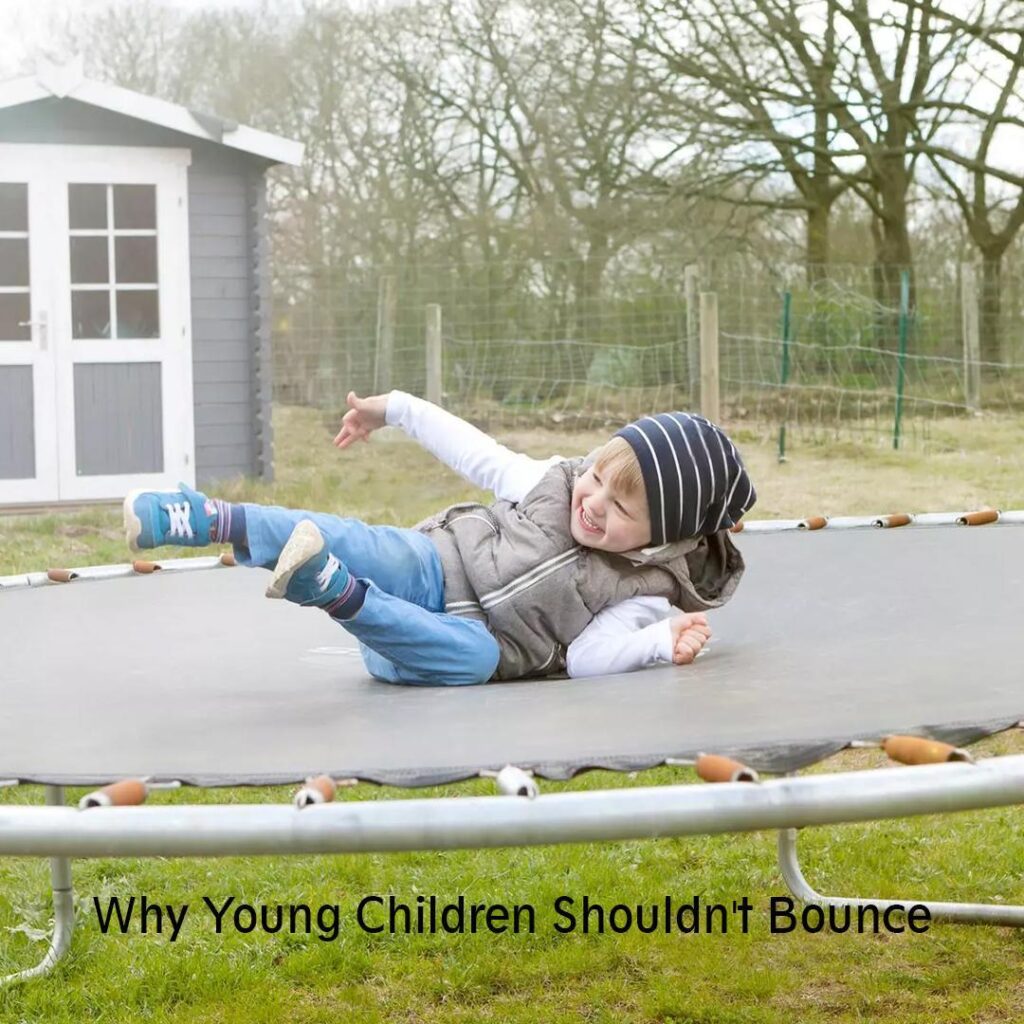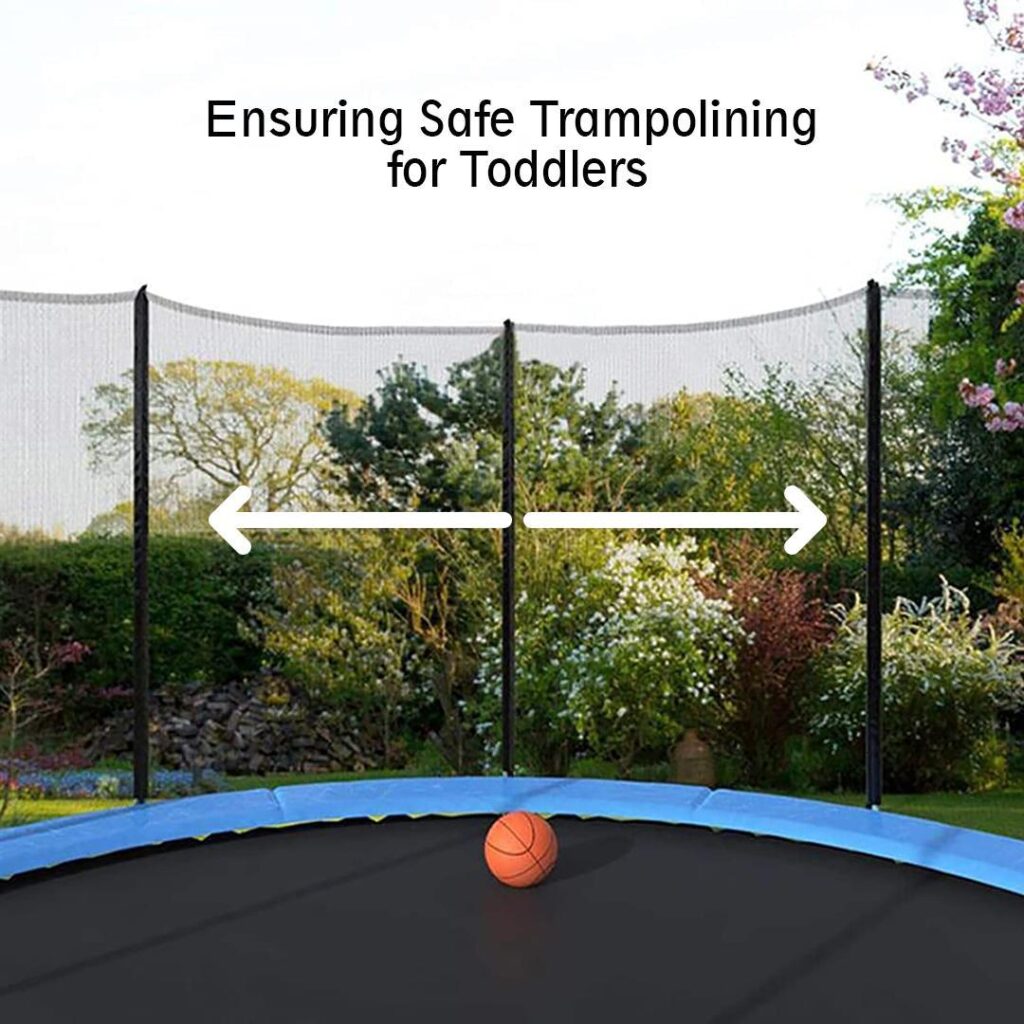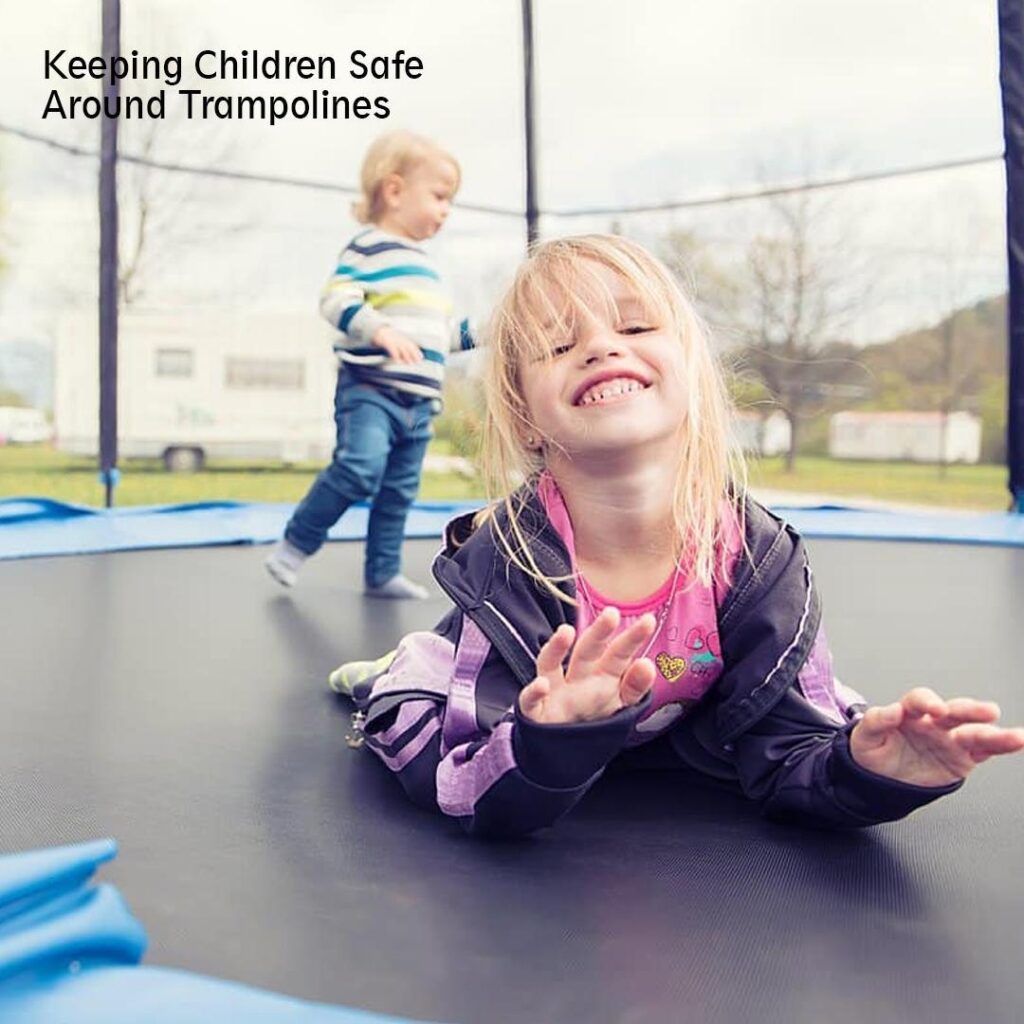Trampolines are incredibly popular among children, serving as both a source of entertainment and a means of exercise. They offer endless potential for fun activities, explorative play, and social development. Older children often delight in the excitement and physical challenges trampolines provide, benefiting from the energetic activity and coordination skills developed through bouncing.

However, the central concern lies in the safety risks trampolines pose, particularly for children under the age of 6. While trampolines can be a fantastic outlet for energy and creativity, they pose significant drawbacks to young children. If you have small children eager to bounce but are hesitant due to safety concerns, this article will explore the reasons behind these risks and offer ways to ensure safer play for younger kids.
Why Young Children Shouldn’t Bounce

Trampolines pose significant risks for young children under 6 due to their physical development and the high potential for serious injuries. Here’s a closer look at why trampolining can be particularly hazardous for this age group:
Insufficient Physical Development
- Young children under the age of 6 are not sufficiently physically developed to handle the demands of trampolining safely.
- Their bones and muscles are growing, making them more vulnerable to injuries.
Higher Risk of Losing Control
- When bouncing on an inground trampoline, these children are at a higher risk of losing control and landing improperly, which can lead to severe injuries.
- Common Injuries
- Fractures: Most frequent in arms and legs.
- Sprains: Commonly occurring due to improper landings.
- Head Injuries: Serious concern with long-lasting consequences.
Limitations of Adult Supervision
- Even with adult supervision, safety is not guaranteed.
- Young children can still get injured due to their lack of coordination and unpredictable movements.
- Supervising adults may not react quickly enough to prevent accidents, especially when multiple children are bouncing simultaneously.
Given these risks, parents must understand the potential dangers and take necessary precautions. Next, we’ll look at what trampoline safety guidelines recommend.
What Trampoline Safety Guidelines Say

Organisations like the Royal Society for the Prevention of Accidents (RoSPA) provide clear guidelines on trampoline use, especially for young children. These guidelines aim to minimise risks and ensure safer play.
But Wait!!!
Before going to understand RoSPA guidelines let’s understand about What is RoSPA?
A British charity, the Royal Society for the Prevention of Accidents (RoSPA) works to prevent accidents-related injuries and deaths. Established in 1916, RoSPA advocates for safety and offers communities, businesses, and individuals education, advocacy, and support. To lower accidents in homes, workplaces, and recreational settings, it conducts research, works with different sectors to create safety standards, and provides training programmes.
Guidelines by RoSPA which aims to minimise risk:
- Adult Supervision at All Times: RoSPA emphasises the importance of constant adult supervision when children are using rectangular trampolines. Supervising adults need to be vigilant and ready to intervene immediately to prevent accidents.
- One Child at a Time: To reduce the risk of collisions and falls, RoSPA recommends allowing only one child on the trampoline at a time. Multiple children jumping together significantly increases the chance of injury.
- Regular Equipment Checks: Regularly inspect the trampoline for any signs of wear and tear. Ensure that the safety nets, padding, and springs are in good condition and securely attached. This can prevent equipment-related injuries.
- No Flips, Somersaults, or Other Stunts: High-risk manoeuvres such as flips and somersaults are strongly discouraged, as they greatly increase the risk of head and neck injuries. Children should be taught to avoid these dangerous stunts.
- Children Under 6 Should Not Use Trampolines: RoSPA advises against allowing children under the age of 6 to use full-sized trampolines. Their developing bodies are more accountable to serious injuries, and they lack the coordination needed for safe bouncing.
These guidelines are designed to protect young children by addressing the increased risks associated with trampolines. Next, we’ll discuss how to prioritise safety features when choosing a trampoline for your family.
Ensuring Safe Trampolining for Toddlers

When selecting a trampoline for toddlers, prioritising safety features is crucial to minimise risks and ensure a secure environment for your little ones. Here are the essential safety features to consider:
- Safety Net Enclosure: Choose trampolines with a safety net enclosure to prevent children from falling off. The net should be securely attached and made of durable material.
- Padded Springs and Frame: Ensure that all springs and the frame are well-padded to protect against injuries. Exposed springs can cause serious cuts and bruises if a child lands on them.
- Sturdy Construction: Opt for trampolines with strong, sturdy construction to support active play. A robust frame made from high-quality materials will enhance stability and longevity.
- Age-Appropriate Size: Select a trampoline that is appropriately sized for toddlers. Smaller trampolines with low ground clearance are safer and more manageable for young children.
- Assembly and Maintenance Instructions: Follow the manufacturer’s assembly instructions carefully to ensure the trampoline is set up correctly. Regular maintenance checks are also essential to keep the trampoline in safe working condition.
- Weight Limit: Be mindful of the manufacturer’s recommended weight limit. The trampoline’s structural integrity may be jeopardised and the likelihood of accidents may rise if it is overloaded.
Adult supervision remains critical. Always watch toddlers while they play, as even with all safety features in place, young children can still get hurt if not properly monitored.
Consider alternatives specifically designed for younger children, such as indoor toddler trampolines with handles. These are typically smaller, safer, and more suitable for toddlers, providing a safe way for them to enjoy bouncing.
By prioritising these safety features, you can significantly reduce the risk of injury and provide a safer play environment for your children. Next, let’s look at some practical advice for parents to keep their children safe on trampolines.
Advice for Parents: Keeping Children Safe Around Trampolines

As a parent, ensuring your child’s safety on a trampoline involves careful consideration and proactive measures. Here are essential tips to help you create a safer trampolining experience:
- Before You Buy: Choose a trampoline model with safety pads that cover springs, hooks, and the frame. Opt for pads that contrast in colour with the frame for visibility. Consider models with built-in safety netting or purchase them separately to prevent bouncers from hitting rigid components and falling off.
- Where to Put It: The trampoline should ideally be set up on an energy-absorbing surface, such as sand, bark wood chips, or a soft lawn. Stay away from roads and concrete surfaces unless you are utilising absorbent safety matting. Make sure there is a secure space of at least 2.5 metres, devoid of toys and harsh items, surrounding the trampoline.
- Checking and Keeping It Safe: Regularly inspect the trampoline to ensure it’s secure and in good condition. Tie it down before use, check padding and nets, and ensure all spring and metal parts are covered. During windy weather or winter, consider dismantling or securing the trampoline to prevent accidents.
- Rules for Use: Establish clear rules for safe trampoline use:
- Allow only one person on the trampoline at a time to reduce the risk of collisions.
- Discourage somersaults and risky manoeuvres unless performed by trained individuals.
- Avoid bouncing exits, which can lead to falls and injuries.
- Remember, trampolines are not suitable for children under six years old. While kids are playing, keep a tight eye on them at all times.
Safe Play Alternatives
While trampolines offer enjoyable physical activity, consider these safe alternatives:
- Playgrounds: Visit local playgrounds equipped with safe, age-appropriate equipment for active play.
- Soft Play Areas: Explore indoor soft play centres with padded structures and supervised environments.
- Sports and Games: Encourage participation in sports or games that promote physical fitness and coordination.
Educating Older Siblings
Educate older siblings about trampoline safety to protect younger children:
- Insist that younger siblings be watched over and that safety regulations be followed.
- Encourage responsible behaviour to prevent accidents and ensure a safe play environment for everyone.
By prioritising safety features, choosing suitable trampoline models, and promoting safe alternatives and education, parents can minimise risks and maximise fun during trampolining activities. Transitioning from awareness to action ensures a safer play experience for all children involved.
Conclusion
In conclusion, the safety guidelines surrounding trampoline use for children under 6 emphasise the inherent risks associated with this activity. Young children’s developing bodies are more susceptible to serious injuries like fractures and head trauma when using trampolines. Prioritising safety features such as padded frames, safety nets, and strict supervision is crucial to mitigating these risks.
Parents must remain vigilant and informed about safe trampoline practices. By making informed decisions and adhering to established safety guidelines, parents can create a safer environment for their children’s play. Let’s continue to prioritise safety, educate our children about responsible play, and explore alternative activities that promote physical development without compromising safety.
Together, we can ensure our children’s well-being while allowing them to enjoy the benefits of active play in a safe and supervised manner.
Children under 6 shouldn’t use trampolines due to their increased risk of injury from their developing coordination and bone structure.
Side effects of trampolines for kids can include sprains, fractures, and concussions due to falls or improper use.
Trampolines can be bad for children’s joints if not used with proper supervision and technique, potentially leading to strain or injury.
Trampolines can be beneficial for autistic children as they provide sensory stimulation and help improve coordination and motor skills.
Trampoline fractures often occur in children under 16 years old, with a higher incidence among those aged 5 to 14.





